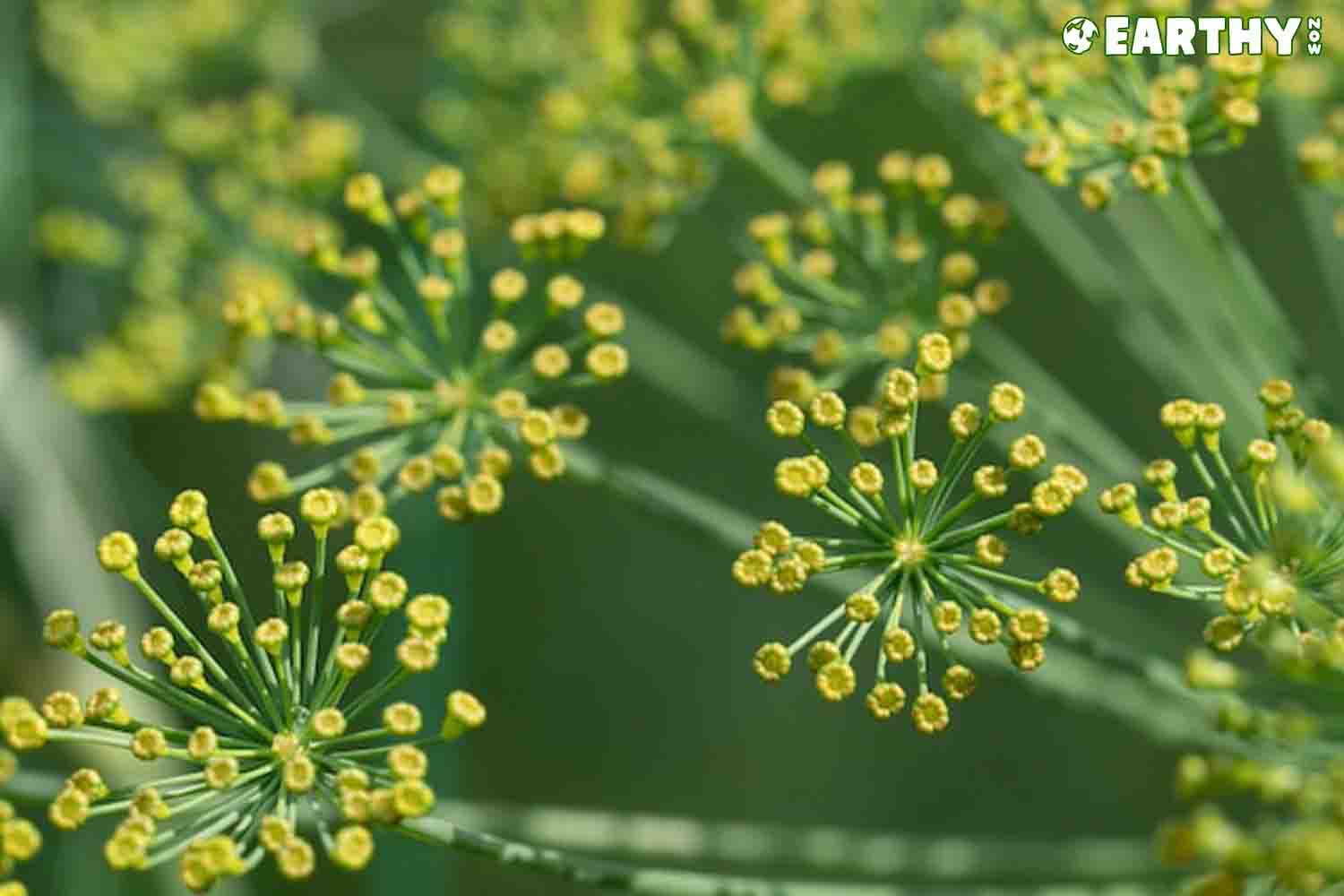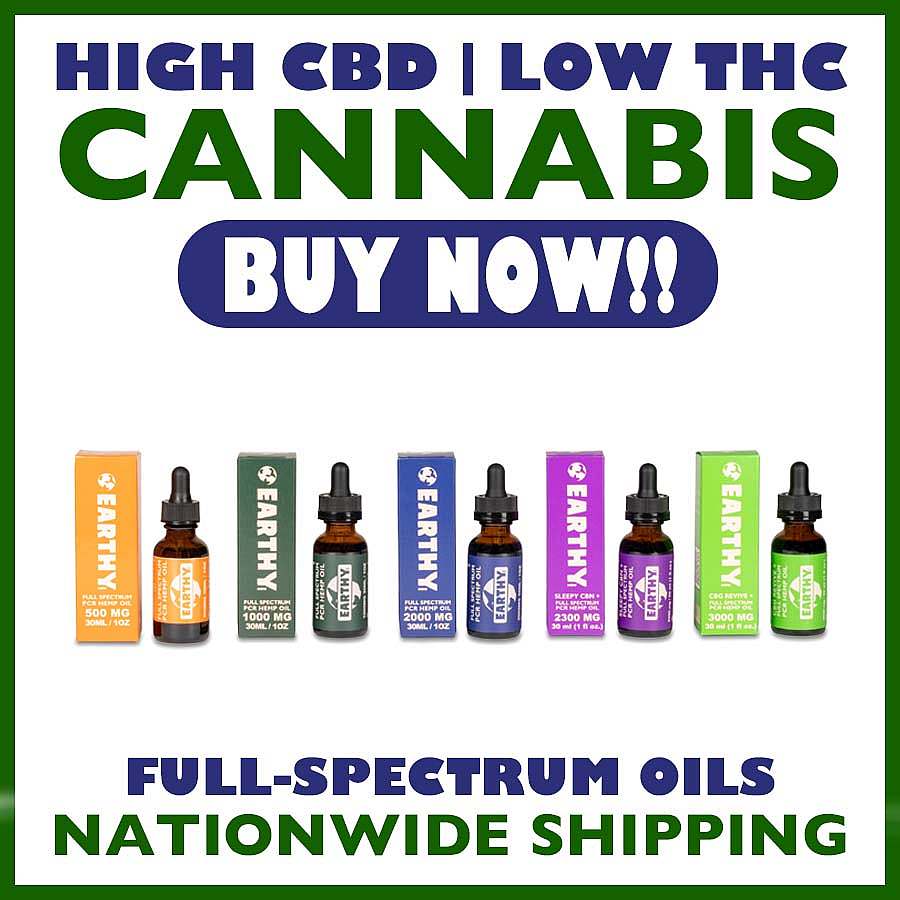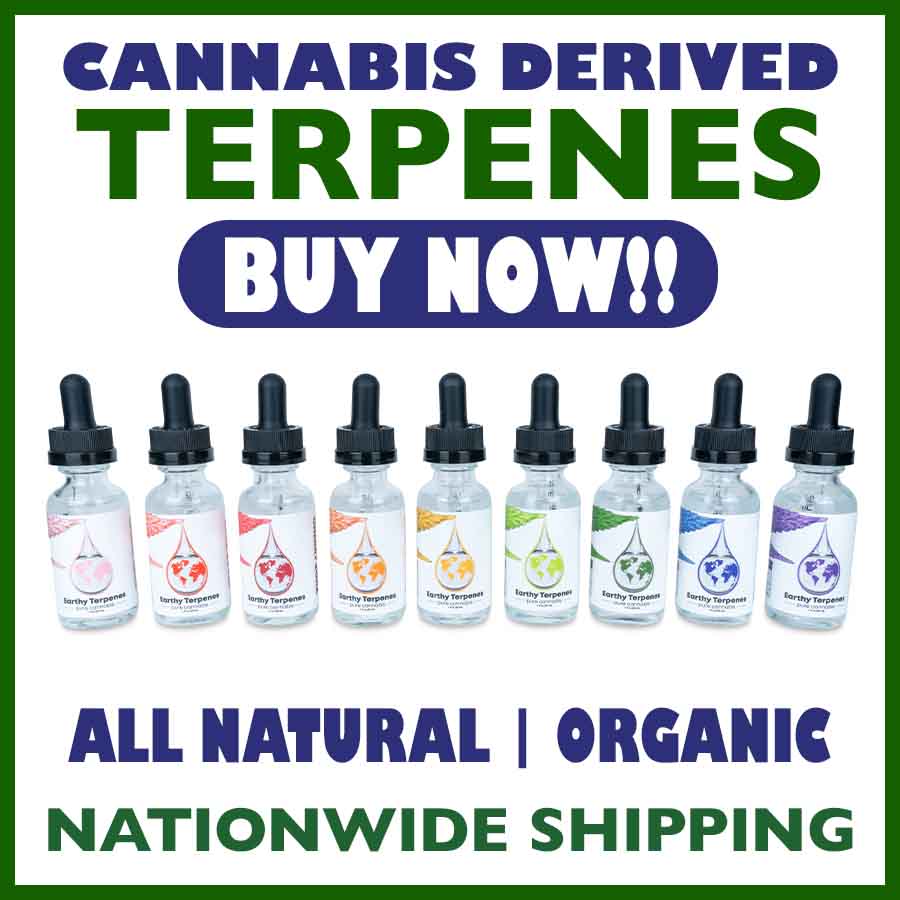Sure, alpha-phellandrene possesses a delightfully pleasing aroma, but what other benefits can it offer, and how is it different from other terpenes? Here we’ll explore what it is and how it can enhance your products as a manufacturer—and your experience as a consumer. It may not be one of the most prevalent terpenes in cannabis, but it is packed with possibilities.
Terpenes explained
What organic compounds does a fragrant bubble bath have in common with the scent of citronella bug spray? Terpenes. The largest class of compounds in botanical essential oils, terpenes are made up of isoprene molecules and serve plants by giving off protective scents that attract pollinators or repellant scents that detract predators. The organic chemistry in terpenes dictates that each isoprene molecule contains five carbon atoms with double bonds [1].
Chemically speaking, terpenes may be subdivided into groups of two possible mechanisms: acyclic or cyclic. Acyclic terpenes are linear, like the monoterpene β-myrcene. Cyclic monoterpenes form a circle, like in α-phellandrene. Botanical essential oils contain monocyclic, bicyclic, or tricyclic monoterpenes [1].
What is α-phellandrene?
The minty cyclic monoterpene duo — α-phellandrene and β-phellandrene — were once commonly misidentified as alpha-pinene and limonene. Yet, after closer analysis of eucalyptus oil, researchers found that there were two distinctive isomeric compounds instead of one, even though alpha-phellandrene has a similar molecular structure and molecular weight to these terpenes [2].
α-phellandrene derives its name from eucalyptus phellandra. Although its highest concentration resides in eucalyptus trees, α-phellandrene can be found in plants such as dill, black pepper, and mint. This herbaceous terpene possesses similar chemical properties and aromas to those in eucalyptol, pinene, and limonene yet serves up a unique set of charms to the olfactory neurons [2].
Uses for α-phellandrene
Because of antioxidant properties and their refreshing, citrus-like fragrances, α-phellandrene and β-phellandrene have become popular ingredients in manufacturing. α-phellandrene has made its way into food additives and food-preserving agents because of its role as an antimicrobial agent and flavor enhancer.
Additionally, α-phellandrene can be added to household products such as air fresheners and cleaners to give them especially crisp, fresh scents. The pleasing aromas associated with α-phellandrene and β-phellandrene make them ideal for cosmetics like skin lotions and natural essential oil-based products[3].
Effects of alpha-phellandrene
In the form of botanical essential oils, alpha-phellandrene and beta-phellandrene have been staples in holistic practices throughout the ages, yet more research is needed to determine their true efficacy [1].
When users of full-spectrum cannabis smoke or consume strains with high levels of α-phellandrene, they may experience an enhancement of the cannabinoids due to the entourage effect: the way in which chemical compounds in the cannabis plant work synergistically to determine the effects of the cannabinoids.
Users have anecdotally reported energizing effects after consuming α-phellandrene in full-spectrum cannabis [4], yet scientific data is needed to know for certain.
Is alpha-phellandrene safe?
Yes, it is perfectly safe when used as directed. Almost all substances can be potentially harmful at certain levels. Precautionary statements about the potential toxicity of high amounts of α-phellandrene describe how hazardous peroxides can form when the terpene is exposed to elevated air temperature. It’s important to follow directions closely when using α-phellandrene or any terpene [5].
Cannabis strains high in α-phellandrene
Alpha-phellandrene is one of the top 20 terpenes in cannabis. Popular cannabis strains high in α-phellandrene include:
- Suver Haze: an award-winning, Sativa-dominant strain from Oregon CBD that was borne of crossing Suver 8 and Early Resin Berry (ERB). The cross produces a peppery, spicy aroma and pungent, woody, and mild skunk flavor.
- Canna Cake: a Sativa-dominant strain with a big flavor, its lineage results in a rich, spicy aroma and tangy, sweet-piney, and citrus earthiness.
- Sour Special Sauce: an Indica-dominant strain from Oregon CBD that is the result of pairing Special Sauce with GG#4 Conversion, the strain is woody and fruity, spicy and sour with astringent berry and exotic flavors, plus a note of sour, dank earth.
What is the entourage effect?
Originally proposed in 1999, the entourage effect describes a mechanism by which cannabis compounds—such as terpenes and flavonoids—act synergistically with cannabinoids to modulate the overall effects of the two plant species [6], whether those may be mood-altering or not. It follows that terpenes would add to the entourage effect because they are part of the overall composition of the plant materials [7].
For example, present study in the Journal of Cannabis Research explores a wide swath of data representing individual responses to various strains in their relationship to terpene synthesis. Their conclusions describe how flavor perception could represent a reliable marker to indirectly characterize the effects of cannabis via the entourage effect [8].
Sources of α-phellandrene
Although most prevalent in eucalyptus oil, α-phellandrene can be extracted from a variety of other plants too, including:
- Mint
- Dill
- Black pepper
- Cinnamon
- Parsley
- Pine
- Lavender
- Water fennel
- Cannabis [2]
Final thoughts on α-phellandrene
Though the constituents of α-phellandrene may give it a similar taste and smell to eucalyptol, there are subtle differences that terpene connoisseurs liken to the subtle olfactory variations among breeds of roses. Try a cannabis strain high in α-phellandrene to see if you can detect the differences. Once you’ve found the essence of that rebel cousin of eucalyptol, you’ll know it anywhere, even if it’s just a whiff of botanical breath on the wind.
Medical Disclaimer / Legal Disclaimer – Information is provided for educational purposes. It does not and is not intended to constitute legal advice or medical advice. We attempt to be accurate and up to date, but the legality of cannabinoids and the science of cannabis are evolving. The author is neither a legal professional nor a medical expert. Before buying or using any products, you should check with your local authorities and medical providers.
References
- Science Direct: Terpenes
- Everything You Need to Know About a-Phelladrene and it’s Benefits
- alpha-Phellandrene: Use and Manufuacturing
- Lab Effects: Terpene Glossary – alpha-Phellandrene
- Science Direct: alpha-Phellandrene
- Antibacterial Properties of a-Terpinolene
- Wikipedia: The Entourage Effect
- Relationship Between Responses, Flavor, and Chemical Composition of over 800 Cannabis Strains
- PubChem: alpha-Phellandrene
- Bio Transformation of a-Phelladrene and it’s Antibacterial Properties







